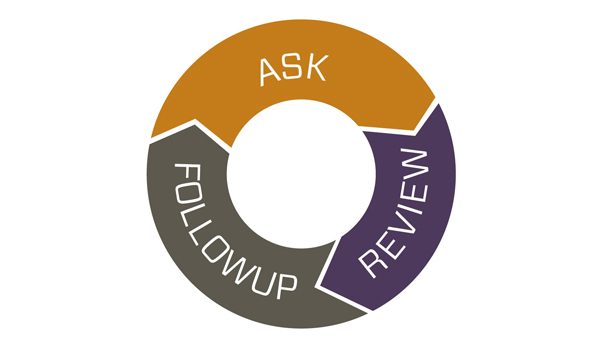
Successful healthcare design delivery teams work in highly collaborative environments. The ability to adapt quickly plays an important role in the success of the team from a client’s perspective.
Without a continuous feedback process, a project can get sideways very quickly yet when feedback is early and actionable, it can accelerate a team’s performance by providing information that allows the team to course correct before issues become insurmountable and before projects goals are jeopardized.
Timely feedback arms design teams with actionable information to meet client expectations throughout the life cycle of the project, while also helping keep the team environment and culture positive and supportive.
At Array, we use client feedback to inform and influence our project delivery process as the project is unfolding. This continuous feedback, borne out of our belief in Lean Improvement Processes, allows our entire team, including consultants, to react quickly to situations where we may not be meeting our client’s expectations and to change course as needed.
Comfortable Process. Our questions are focused on processes, not personalities, and offer a flexible answer scale to capture subtle nuances of perceptions to help the team. This process is comfortable for all parties and takes about two minutes for the client to complete. The more comfortable the process, the more likely parties are to participate. A comfortable process means our clients will not feel put on the spot and concerned about a confrontation.
Actionable Results. An effective feedback technique requires data to enable follow-up. The questions asked are about process rather than people. We aren’t looking to find out how well our clients “like” us, but rather where our process is working well and where it might need some improvement to meet their expectations. The questions we ask allow us to retrieve measurable, actionable data so that the team can take corrective action immediately.
Beyond Satisfaction. Questions in our survey are focused on client expectations, instead of their satisfaction, because satisfaction is the expected norm. Our client’s perception of how we performed compared to their expectations is the key to knowing where to improve our project delivery process. Discovering exceptionally positive feedback is nice, but uncovering challenging feedback in time to take corrective action is really more important to us. Feedback helps keep us and our client aligned on a common goal – a successful project outcome.
Don’t Wait. We collect feedback throughout the project, not just at the end – when it’s too late to improve that project. For instance, receiving feedback after important early project visioning sessions can help to influence how subsequent user meetings are conducted. We have witnessed response rates to be the highest when our client senses their feedback might improve the project outcome.
Make it Trackable. Tracking feedback responses isn’t complicated, but making sure everyone on your team gets the feedback they need, reviews it and takes appropriate action can be much more challenging. At Array, the tools we have deployed capture who is asking for feedback, who is responding and who is taking action on each critical response. Feedback is collected in a way that appropriate team members are instantly alerted to new feedback to drive real-time action and follow-up. Feedback that indicates we are not meeting client expectations are elevated immediately for follow-up, insuring nothing falls through the cracks.
Example of Feedback Report
Our surveys are structured so that it is quick and easy for the client, we don’t waste our clients’ time with long surveys or questions with answers that only matter to us. We have enjoyed fairly high response rates in part because our clients have begun to see that their responses result in follow-up and action when needed. We use surveys to start a conversation, not replace one. When special situations are noted (either in scores or comments) a dialogue is opened to change our process going forward.
Simply stated, our goal is to collect actionable feedback in way that is easy for the client, to improve our delivery process and meet client expectations of project success.
Carl’s insight on Feedback Surveys featured in this month’s Medical Construction & Design. Click here to view Continuous Feedback for Improved Project Delivery on MCD.






